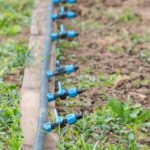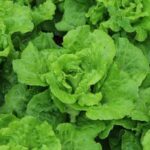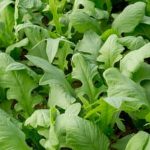When it comes to vegetable gardening, the presence of beneficial plants can make all the difference in ensuring a successful and thriving garden. These special plants have numerous advantages, from enhancing growth to pest control. By understanding their importance and incorporating them into your garden, you can harness their power for maximum results.
In this article, we will explore the significance of beneficial plants in vegetable gardening and delve into various aspects such as identifying them, attracting pollinators, natural pest control, nitrogen-fixing plants for soil enrichment, companion planting, planning and incorporating them into your garden, as well as maintenance and care. Get ready to unlock the secrets of using beneficial plants to transform your vegetable garden into a flourishing haven of sustainable produce.
Identifying and Understanding Beneficial Plants
Beneficial plants play a crucial role in vegetable gardening by providing numerous benefits to the overall health and productivity of the garden. Identifying and understanding these beneficial plants is essential for gardeners who want to optimize their vegetable growing experience.
In the context of vegetable gardening, beneficial plants are those that contribute positively to the growth and well-being of vegetables. These plants can serve various purposes, such as attracting pollinators, repelling pests, enriching soil fertility through nitrogen fixation, or even acting as companion plants that provide shade or nutrient support.
Flowering plants are one type of beneficial plant commonly found in vegetable gardens. Their vibrant blooms not only add beauty to the garden but also attract pollinators like bees and butterflies. These pollinators play a vital role in ensuring successful fruit set and seed production in many vegetables. Examples of flowering plants that are beneficial for attracting pollinators include marigolds, zinnias, sunflowers, and lavender.
Herbs are another category of beneficial plants with various uses in vegetable gardening. Many herbs have natural pest-repellent properties, making them excellent companions for vegetables. For example, planting basil alongside tomatoes helps deter pests like aphids and hornworms from damaging the tomato plants. Additionally, herbs like parsley and dill can attract beneficial insects like parasitic wasps that prey on harmful garden pests.
Companion plants are beneficial plants that have specific advantages when grown alongside certain vegetables. They can provide shade to more delicate crops or act as a trap crop that lures pests away from valuable vegetables. An example of companion planting is growing tall sunflowers next to corn crops; the sunflowers create shade for the corn while their sturdy stems offer support against wind damage.
Understanding the different types of beneficial plants available allows gardeners to make informed decisions about which ones will best suit their specific needs in vegetable gardening. Whether it be attracting pollinators, repelling pests, enhancing soil fertility, or providing support to companion plants, incorporating these plants into a vegetable garden can lead to healthier, more productive crops.
Importance of Pollinators in Vegetable Gardening
Pollinators play a crucial role in vegetable gardening as they are responsible for the growth and fruit set of many types of vegetables. Without these pollinators, such as bees and butterflies, vegetables would not be able to produce viable seeds or develop into the ripe and delicious produce that we enjoy. Therefore, it is essential for vegetable gardeners to understand the importance of attracting and supporting pollinators in their gardens.
The Role of Pollinators
Pollinators are essential for the reproduction of flowering plants, including many vegetables. When a pollinator visits a flower, it transfers pollen from the male reproductive organs (anthers) to the female reproductive organs (stigma), resulting in fertilization. This process allows the flower to develop into a fruit that contains seeds. In vegetable gardening, this is particularly important as it ensures that the plants can produce high-quality fruits with viable seeds.
Without proper pollination, some vegetables may not form fruit at all or have misshapen and underdeveloped fruits. Additionally, inadequate pollination can lead to reduced yields and poor quality produce. By attracting and providing suitable habitat for pollinators in your vegetable garden, you can increase the chances of successful pollination and promote healthier plant growth.
Attracting Pollinators with Beneficial Plants
One effective way to attract pollinators to your vegetable garden is by incorporating beneficial plants that provide them with food sources such as nectar and pollen. Many flowering plants fall into this category and can serve as beacons for bees, butterflies, hummingbirds, and other pollinating insects. Some examples of beneficial plants that attract pollinators include bee balm (Monarda), lavender (Lavandula), borage (Borago officinalis), sunflowers (Helianthus), and zinnias (Zinnia spp).
When selecting beneficial plants for attracting pollinators, it is beneficial to choose a variety of species that bloom at different times throughout the growing season. This ensures a continuous food supply for the pollinators and increases their presence in your garden. Additionally, providing water sources such as birdbaths or shallow dishes with stones can also attract pollinators by offering them a place to drink and cool down.
By understanding the importance of pollinators in vegetable gardening and taking steps to attract and support them through beneficial plants, you can enhance the overall health and productivity of your garden. Not only will this result in better harvests, but it will also contribute to the conservation of these vital insects that are integral to our ecosystem.
Natural Pest Control with Beneficial Plants
The Importance of Natural Pest Control
One of the key benefits of incorporating beneficial plants into your vegetable garden is their ability to naturally control pests. Using chemical pesticides can harm not only the pests but also beneficial insects and organisms that are essential for a healthy ecosystem. By relying on natural pest control methods, you can effectively manage unwanted pests while maintaining a balanced and thriving garden.
List of Plants That Repel Common Garden Pests
When it comes to natural pest control, certain plants have been found to repel common garden pests. Here are some examples:
- Marigolds: These bright yellow or orange flowers are well-known for repelling aphids and nematodes. Plant them around your vegetable garden as a natural deterrent.
- Nasturtiums: These vibrant flowering plants act as a trap crop, attracting aphids away from your vegetables and helping to keep them at bay.
- Chives: Planting chives among your vegetables can deter pests such as Japanese beetles, carrot flies, and aphids.
- Rosemary: This aromatic herb not only adds flavor to your dishes but also repels cabbage moths, bean beetles, and carrot flies.
- Garlic: Known for its pungent aroma, garlic is an effective repellent for snails, slugs, and even mosquitoes.
Companion Planting for Pest Control
In addition to individual plants that repel pests, companion planting is another strategy that uses the principle of natural pest control in vegetable gardening. Companion planting involves cultivating specific plant combinations that symbiotically benefit each other by deterring pests or attracting beneficial insects.
For example, planting basil near tomatoes can help deter tomato hornworms due to its strong scent. At the same time, basil attracts pollinators like bees and butterflies that aid in tomato fruit set.
Another example is planting mint near cabbage, which helps deter cabbage moths. Additionally, mint flowers attract hoverflies, which are natural predators of aphids.
By including a variety of beneficial plants in your vegetable garden, you create a diverse and resilient ecosystem that naturally discourages pests while promoting healthy plant growth. Plus, the added beauty and aroma from these plants can enhance the overall aesthetic appeal of your garden. So why not give natural pest control with beneficial plants a try? Your vegetable garden will thank you.
Nitrogen-Fixing Plants for Soil Enrichment
One essential aspect of vegetable gardening is ensuring that the soil is rich in nutrients to support healthy plant growth. Nitrogen is a crucial nutrient for vegetables as it promotes leafy green growth and overall plant vigor. However, nitrogen can easily become depleted from the soil over time through plant uptake and leaching. This is where nitrogen-fixing plants come into play.
Nitrogen-fixing plants are types of plants that have a unique ability to convert atmospheric nitrogen into a form that can be readily used by plants. They do this with the help of specialized bacteria that live in nodules on their roots. These bacteria take in atmospheric nitrogen and convert it into a usable form called nitrates, which can then be absorbed by other plants in the surrounding area.
Several beneficial nitrogen-fixing plants can be incorporated into vegetable gardens to naturally enrich the soil’s fertility. One well-known example is legumes, such as beans, peas, and lentils. Legumes are excellent choices for gardeners looking to boost nitrogen levels as they have a symbiotic relationship with nitrogen-fixing bacteria.
Another nitrogen-fixing plant commonly used in vegetable gardening is clover. Clover acts as both a cover crop and a living mulch between vegetable rows, smothering weeds while fixing nitrogen into the soil at the same time. White clover or red clover varieties work best for this purpose.
Including nitrogen-fixing plants not only provides natural soil enrichment but also saves gardeners from having to rely solely on synthetic fertilizers, making it an eco-friendly choice. Additionally, these plants improve overall soil health by increasing organic matter content and enhancing its ability to retain moisture.
Overall, incorporating nitrogen-fixing plants like legumes and clover into vegetable gardens serves as an effective method of maintaining healthy soils without relying heavily on chemical inputs. By harnessing their unique ability to fix atmospheric nitrogen, gardeners can foster sustainable and productive vegetable growth while minimizing their environmental impact.
Companion Planting
Companion planting is a gardening technique that involves planting different species of plants together in order to benefit each other. By strategically pairing certain plants, vegetable gardeners can maximize their yields, deter pests, and promote overall plant health. Here are some examples of beneficial plant combinations that thrive together in a vegetable garden:
- Tomatoes and Basil: Tomatoes and basil complement each other perfectly when planted together. Basil repels tomato hornworms, which are common pests for tomatoes. Additionally, the strong aroma of basil can enhance the flavor of tomatoes.
- Cucumbers and Nasturtiums: Nasturtiums act as a natural trap crop for aphids, attracting them away from cucumbers and protecting them from infestation. The flowers also attract pollinators, resulting in improved fruit set for cucumbers.
- Carrots and Onions: Planting onions alongside carrots can help repel carrot flies, which are known to damage carrot roots. Onions also release certain compounds into the soil that suppresses weed growth around neighboring plants like carrots.
- Lettuce and Radishes: Radishes grow quickly and help loosen compacted soil while lettuce takes longer to mature. Planting radishes between rows of lettuce can prevent overcrowding while waiting for the lettuce to grow fully.
It is important to keep in mind that not all plant combinations work well together. Some plants may have adverse effects on others due to competition for nutrients or spacing issues. Therefore, it is essential to research and plan companion plant combinations carefully before implementing them in your vegetable garden.
| Beneficial Plant Combination | Benefits |
|---|---|
| Beans and Corn | Beans provide nitrogen enrichment to corn, while corn provides vertical support for beans |
| Peppers and Chives | Chives can deter aphids and other pests that commonly affect peppers |
| Zucchini and Marigolds | Marigolds repel nematodes, which are harmful to zucchini plants |
By incorporating companion planting techniques into your vegetable garden, you can create a harmonious and mutually beneficial ecosystem that will enhance plant growth and overall garden productivity.
Planning and Incorporating Beneficial Plants in Your Vegetable Garden
When it comes to planning and designing a vegetable garden, incorporating beneficial plants can greatly enhance its overall health and productivity. These plants not only attract pollinators and provide natural pest control but also enrich the soil with essential nutrients. To effectively incorporate beneficial plants into your vegetable garden, consider the following tips.
Firstly, assess the sun exposure in your garden. Most vegetables require full sun, so ensure that the areas designated for your vegetable beds receive at least 6 to 8 hours of direct sunlight per day. Once you have determined the sunny spots in your garden, plan where to place the beneficial plants accordingly. Keep in mind that some flowering plants or herbs may require partial shade, so choose their locations strategically based on their specific sunlight requirements.
Secondly, consider the spacing between your vegetable crops and beneficial plants. While companion planting is effective, it is important to give each plant enough space to flourish. Some beneficial plants tend to spread out or have larger root systems, so make sure they do not overcrowd neighboring vegetables or compete for resources such as water and nutrients.
Lastly, carefully think about the aesthetics of your garden when incorporating beneficial plants. Choose flowering plants or herbs with colors and textures that complement your vegetables while adding beauty to your outdoor space. This will not only create an attractive garden but also improve biodiversity by attracting a variety of insects and pollinators.
| Beneficial Plant | Specific Benefit |
|---|---|
| Marigold | Natural insect repellent (e.g., aphids) |
| Lavender | Attracts pollinators (e.g., bees, butterflies) |
| Basil | Natural pest repellent and enhances tomato growth |
| Nasturtium | Deters pests like aphids and cabbage worms |
| Comfrey | Nitrogen accumulator and dynamic accumulator of nutrients in compost |
Maintenance and Care for Beneficial Plants
Maintaining and caring for the beneficial plants in your vegetable garden is crucial to ensure their health and effectiveness in supporting the growth of your vegetables. Proper maintenance techniques can also help to maximize the benefits that these plants provide, such as pest control and soil enrichment. This section will provide guidelines on how to properly care for beneficial plants in your vegetable garden.
When it comes to watering your beneficial plants, it is important to strike a balance. Over-watering can lead to root rot and other issues, while under-watering can cause stress and hinder their ability to thrive. Generally, beneficial plants require consistent moisture but not excessive watering. It is advisable to water deeply, ensuring that the water reaches the roots of the plants. However, be cautious not to let the soil become completely waterlogged.
Pruning is another important aspect of maintaining beneficial plants. Regular pruning helps promote healthy growth by removing dead or damaged branches, improving air circulation, and preventing overcrowding. Additionally, pruning also encourages bushier growth in certain types of beneficial plants such as herbs.
Pest management techniques are crucial for ensuring that your beneficial plants remain effective in controlling pests in your vegetable garden. Although these plants may have natural repellent properties against certain insects or pests, they are not completely immune. Regularly inspect your beneficial plants for signs of pest infestation and promptly apply appropriate measures if necessary. This may include using organic insecticides or physical removal methods like handpicking insects off the plant.
By following these maintenance guidelines, you can create a thriving ecosystem within your vegetable garden consisting of both vegetables and beneficial plants. Taking good care of these beneficial plants ensures that they continue supporting the growth of your vegetables by providing pest control and enriching the soil with essential nutrients. With proper maintenance and care, you will reap the full benefits of incorporating these invaluable allies into your vegetable gardening practices.
Conclusion
In conclusion, the incorporation of beneficial plants into your vegetable garden can greatly enhance its overall productivity and sustainability. By understanding the role and importance of beneficial plants, you can create a thriving ecosystem that supports the growth of your vegetables while also controlling pests naturally.
Beneficial plants play a crucial role in vegetable gardening by attracting pollinators and supporting their vital work in fruit set and growth. By introducing flowering plants and herbs in your garden, you can provide a habitat for bees and butterflies, ensuring that your vegetables receive the necessary pollination for optimal yield.
Furthermore, certain beneficial plants act as natural pest repellents, reducing the need for harmful chemical pesticides. By planting specific species known to repel common garden pests like aphids, slugs, and nematodes, you can protect your vegetables without harming beneficial insects or disrupting the ecological balance.
Additionally, incorporating nitrogen-fixing plants into your vegetable garden is an excellent way to enrich soil fertility. These plants contribute nitrogen to the soil through symbiotic relationships with bacteria, promoting healthy plant growth and reducing the need for synthetic fertilizers.
To harness the power of beneficial plants effectively, careful planning and consideration are essential. Pay attention to sun exposure, spacing between plants, and aesthetics when designing your vegetable garden layout. And don’t forget regular maintenance and care techniques such as proper watering, pruning, and pest management to ensure that your beneficial plants thrive.
Incorporating beneficial plants into your vegetable garden is not only environmentally friendly but also yields fruitful results. By harnessing their power throughout all stages of gardening – from attraction of pollinators to natural pest control and soil enrichment – you can create a sustainable garden that promotes healthy plant growth while minimizing harm to the environment. So why wait? Start implementing these beneficial plants in your own vegetable garden today and enjoy the bountiful rewards they bring.
Frequently Asked Questions
What plants can I put in my vegetable garden?
When it comes to choosing plants for your vegetable garden, there are numerous options to consider. Some popular choices include tomatoes, peppers, cucumbers, lettuce, spinach, and zucchini.
These are all versatile vegetables that can thrive in a variety of climates and growing conditions. Additionally, you might want to consider including herbs like basil, parsley, and dill in your garden as they can enhance the flavor of your dishes and provide additional culinary benefits.
What flowers are beneficial to vegetables?
Incorporating flowers into your vegetable garden can provide various benefits to the overall health and productivity of your crops. One flower that is particularly beneficial is marigold. Marigolds not only add vibrant color to your garden but also act as natural pest repellents by deterring harmful insects like nematodes and aphids.
Another flower worth considering is nasturtiums which not only attract pollinators such as bees but also repel pests like cabbage worms and aphids due to their pungent scent. Lastly, planting borage alongside your vegetables can attract beneficial insects such as bees while aiding in improving soil fertility.
What plants produce the most vegetables?
Several plants are known for producing an abundance of vegetables, enabling you to enjoy a bountiful harvest from your garden. Zucchini is often praised for its prolific nature, yielding numerous fruits throughout the growing season. Tomatoes are another popular choice as they tend to produce a large quantity of fruit when provided with adequate sunlight and care.
Green beans also have a reputation for their high productivity; pole beans especially tend to yield more than bush beans if properly supported during growth. Other plants like peppers and cucumbers are also known for offering generous yields under favorable growing conditions.

If you’re looking to get into vegetable gardening, or are just looking for some tips on how to make your current garden better, then you’ve come to the right place! My name is Ethel and I have been gardening for years. In this blog, I’m going to share with you some of my best tips on how to create a successful vegetable garden.





